Every square inch of dining‐room storage matters, especially now that formal eating areas moonlight as home offices, homework hubs, and cocktail lounges. The trick is blending practical hideaways with pieces that look intentional, not improvised. Below are 20 field-tested ideas—pulled from designers, organizers, and recent trend reports—that show how to tuck linens, dishes, and “just in case” extras into beautiful, hardworking furniture. Whether you own or rent, favor maximalist drama or minimalist calm, there’s a solution here that respects flow, scale, and today’s emphasis on sustainable, flexible design. Pick one or layer several to create a room that welcomes guests and still keeps clutter out of sight.
1. Sideboards & Buffets Keep Dining Room Storage Seamless
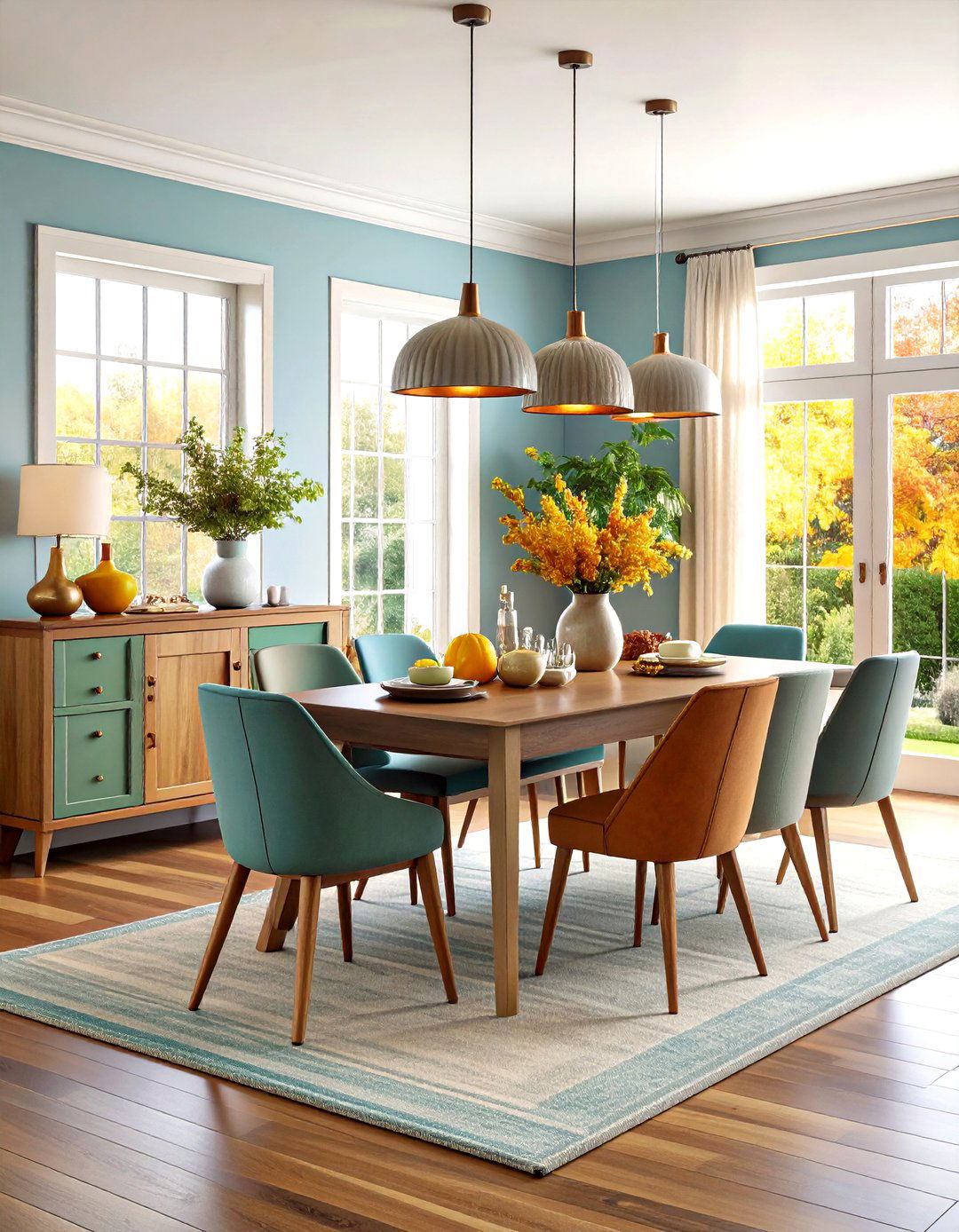
A classic sideboard or buffet is almost purpose-built for dining-room storage: drawers corral flatware, deep cabinets hide serving platters, and the top becomes an instant bar or dessert station. Opt for a compact sideboard in small spaces; larger rooms can handle a credenza-length buffet for maximum capacity. Modern models mix open and closed sections so favorite ceramics can stay on display while less-pretty appliances stay stowed. Measure wall length first, then choose a piece on legs to keep sight lines light, or a skirted silhouette for traditional gravitas. The beauty is that the furniture works just as well in a future living room or hallway if your layout changes. Castlery
2. Built-In Banquette Drawers Double Dining Room Storage
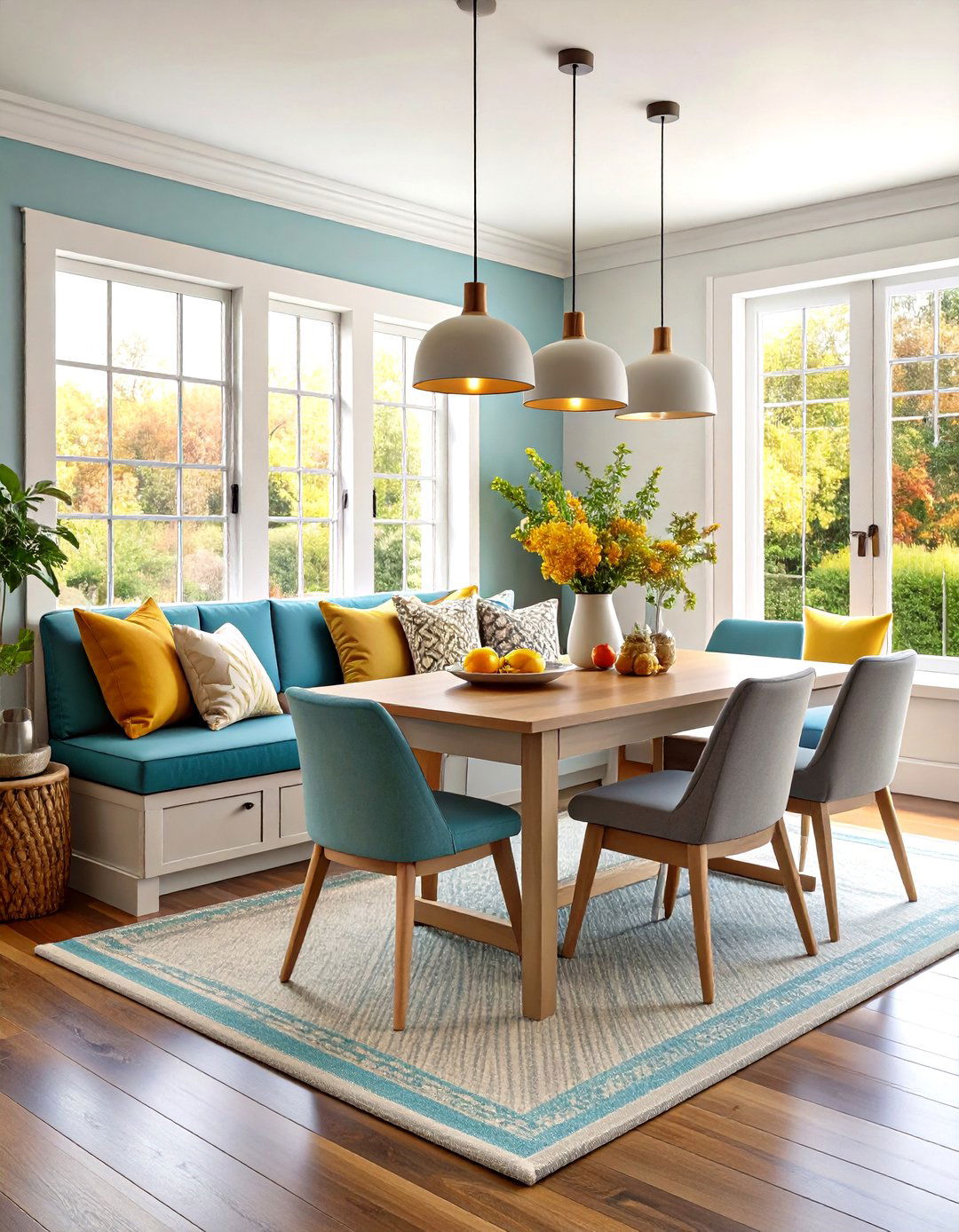
Slipcovered benches feel cozy, but a banquette with flip-up seats or pull-out drawers transforms every breakfast nook into stealth storage. Contractors can frame a low box, line it with cedar to deter pests, and top it with custom cushions; DIYers can adapt ready-made IKEA cabinets. Use the space for seldom-used holiday dishes, board games, or small appliances that clutter the kitchen. Because weight sits directly on the floor, you’re not limited by shelf capacity. Add plug-in puck lights under the seat to make deep compartments easier to navigate, and upholster in performance fabric so lids can stay open without worrying about grime. The Spruce
3. Glass-Front China Cabinets Show Off Dining Room Storage
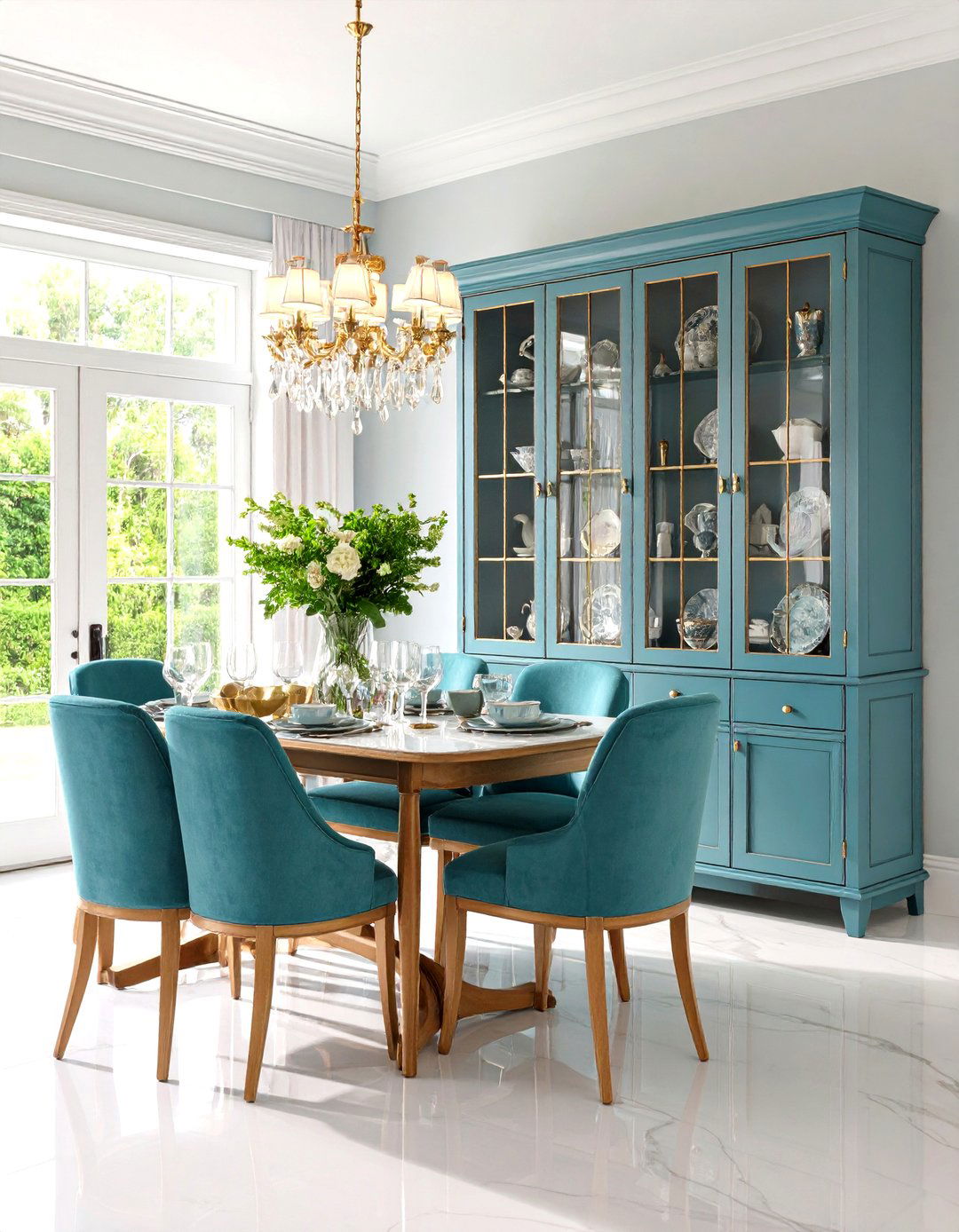
Hutches are back—only now their mullioned doors often stretch to the ceiling and come in bold, painted finishes. A glass-front cabinet lets prized plates breathe while protecting them from dust, and lower drawers hide table linens or candle holders. If a vintage piece feels heavy, paint the interior a lighter hue or add remote-controlled LED strips for museum-style glow. Designers love mixing antique hutches with modern tables to keep rooms from reading too formal. Tight on space? A slim single-door curio still adds vertical storage without sacrificing floor area. Better Homes & Gardens
4. Floating Shelves Turn Walls into Dining Room Storage
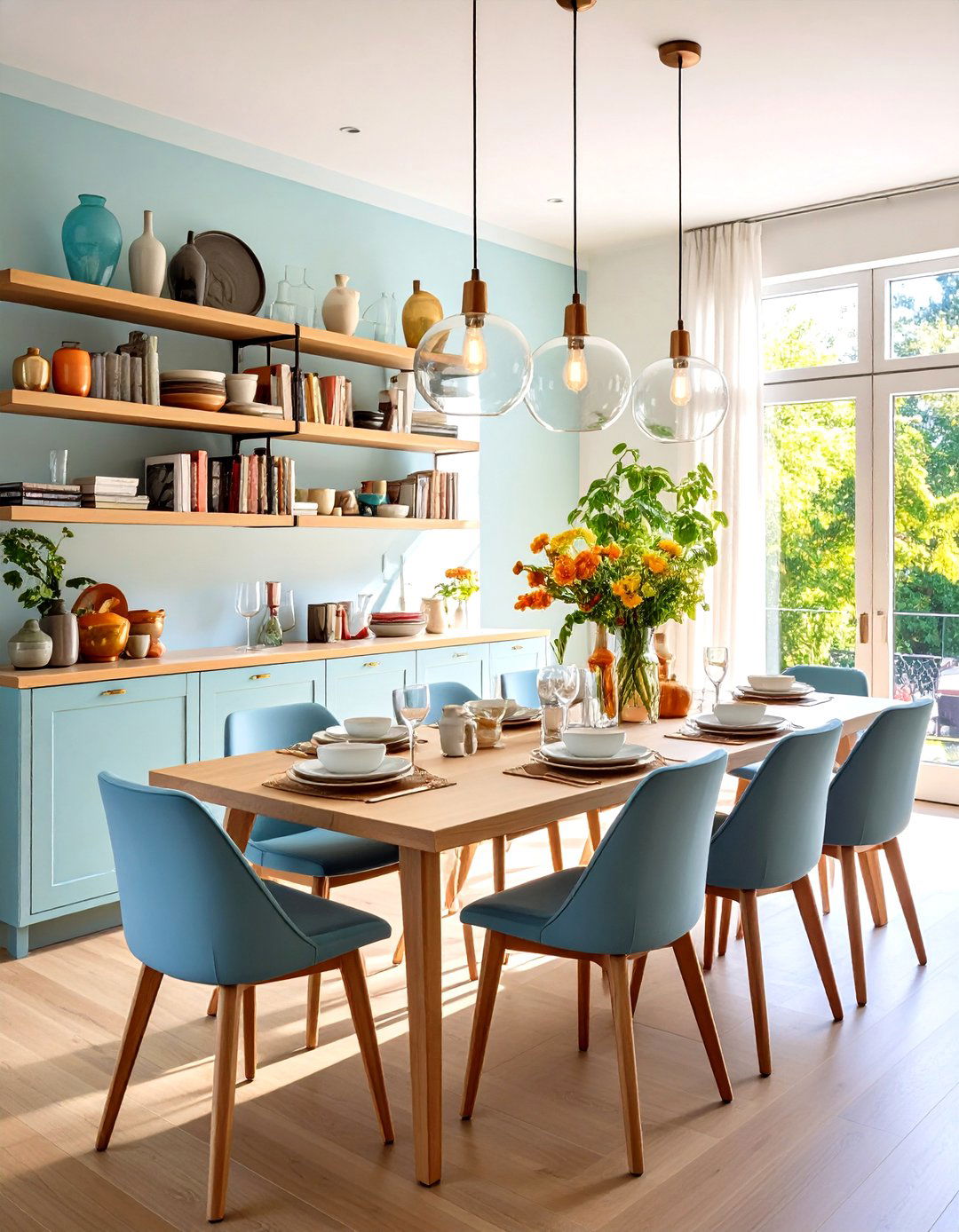
Open shelves aren’t just for kitchens. A trio of thick, walnut planks behind the dining table can display everyday glassware, decanters, or cookbooks, freeing cabinets elsewhere. Mount shelves on staggered brackets so heavier items sit closest to studs, and stop short of the ceiling to avoid a top-heavy look. Because everything is visible, curate by color or material—clear glass decanters on one shelf, white platters on another—to prevent visual noise. Reserve the highest ledge for seasonal pieces. The Spruce
5. Rolling Bar Carts Offer Mobile Dining Room Storage
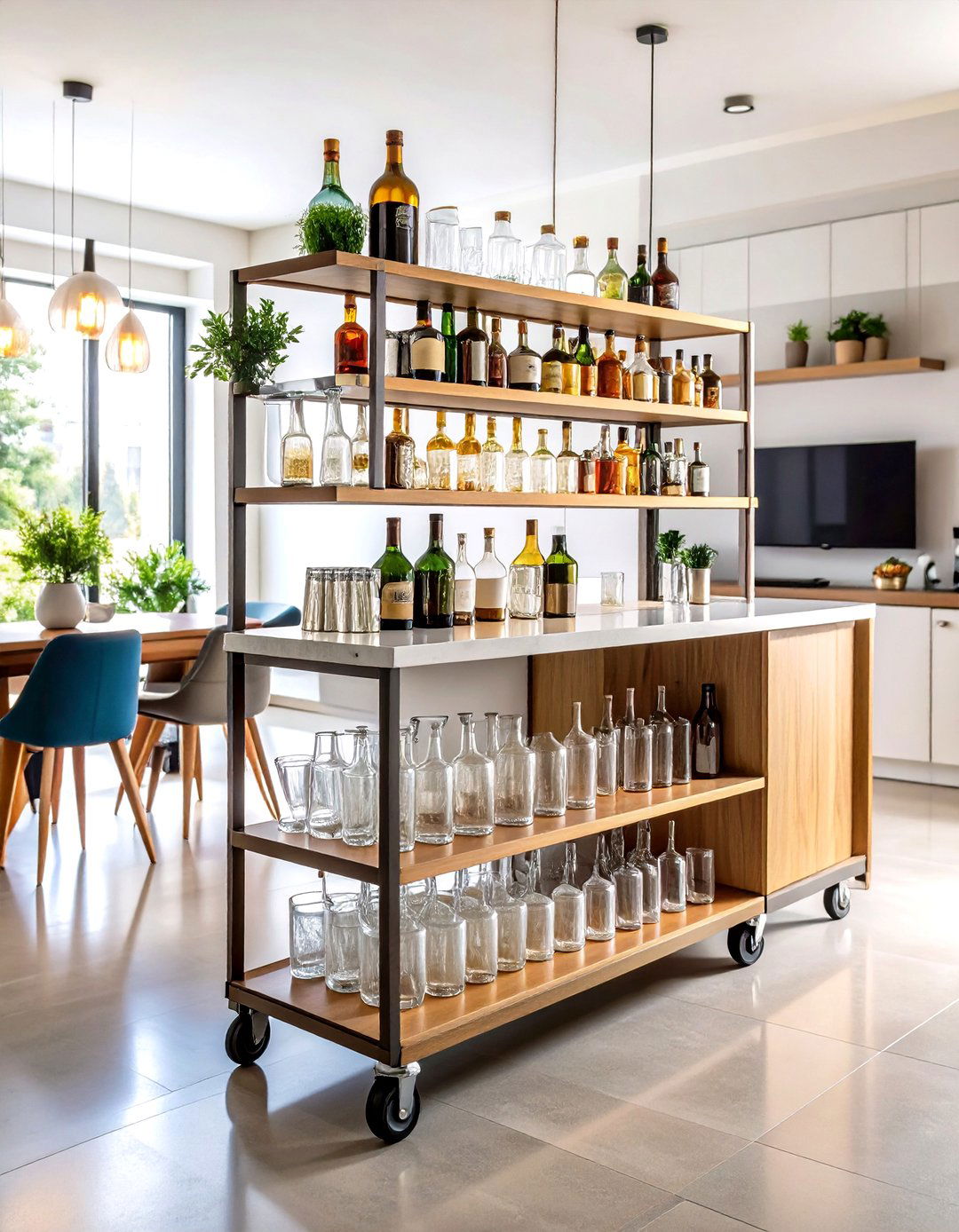
Entertaining frequently? A bar cart tucks under a window until the next dinner party, then glides tableside carrying bottles, glassware, and ice. Choose a model with two shelves and a locking caster to keep it stable on wood floors. When not mixing drinks, the cart can house houseplants, coffee-station supplies, or even breakfast cereals during busy weekdays. Compact apartments benefit because the footprint is tiny, yet vertical rails prevent items from sliding off when the cart moves. Apartment Therapy
6. Corner Hutches Maximize Awkward Dining Room Storage
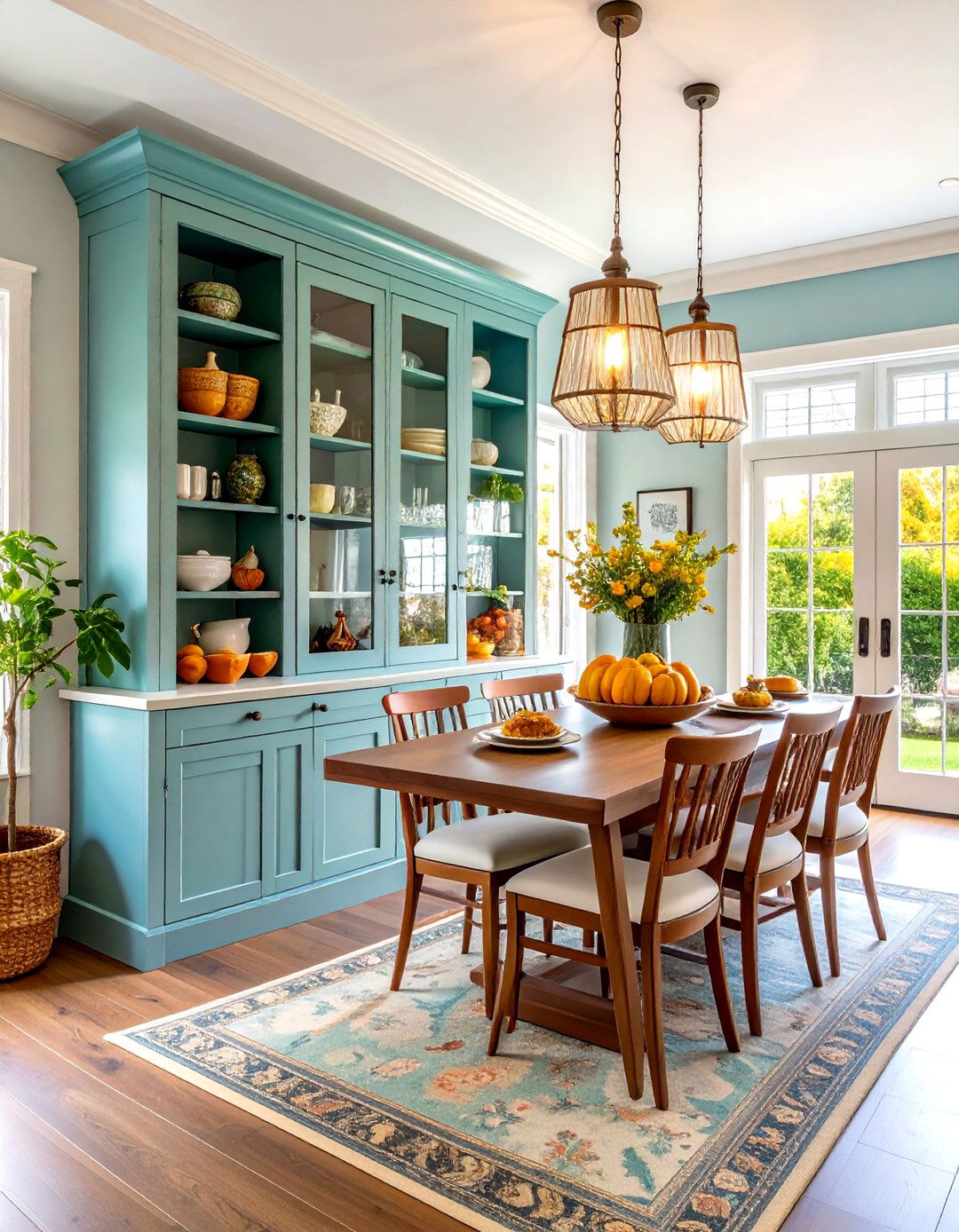
Those hard-to-furnish 90-degree nooks become heroes with a triangular hutch. Professional organizers recommend lazy-Susan hardware or pull-out shelves so nothing disappears into the back. Store lighter items higher and heavier platters below to maintain balance. Glass doors keep the piece from feeling bulky, and painting the interior one shade darker than the room adds depth. Add under-shelf puck lighting for drama and ease of access. Real Homes
7. Storage Benches Add Hidden Dining Room Storage Seating
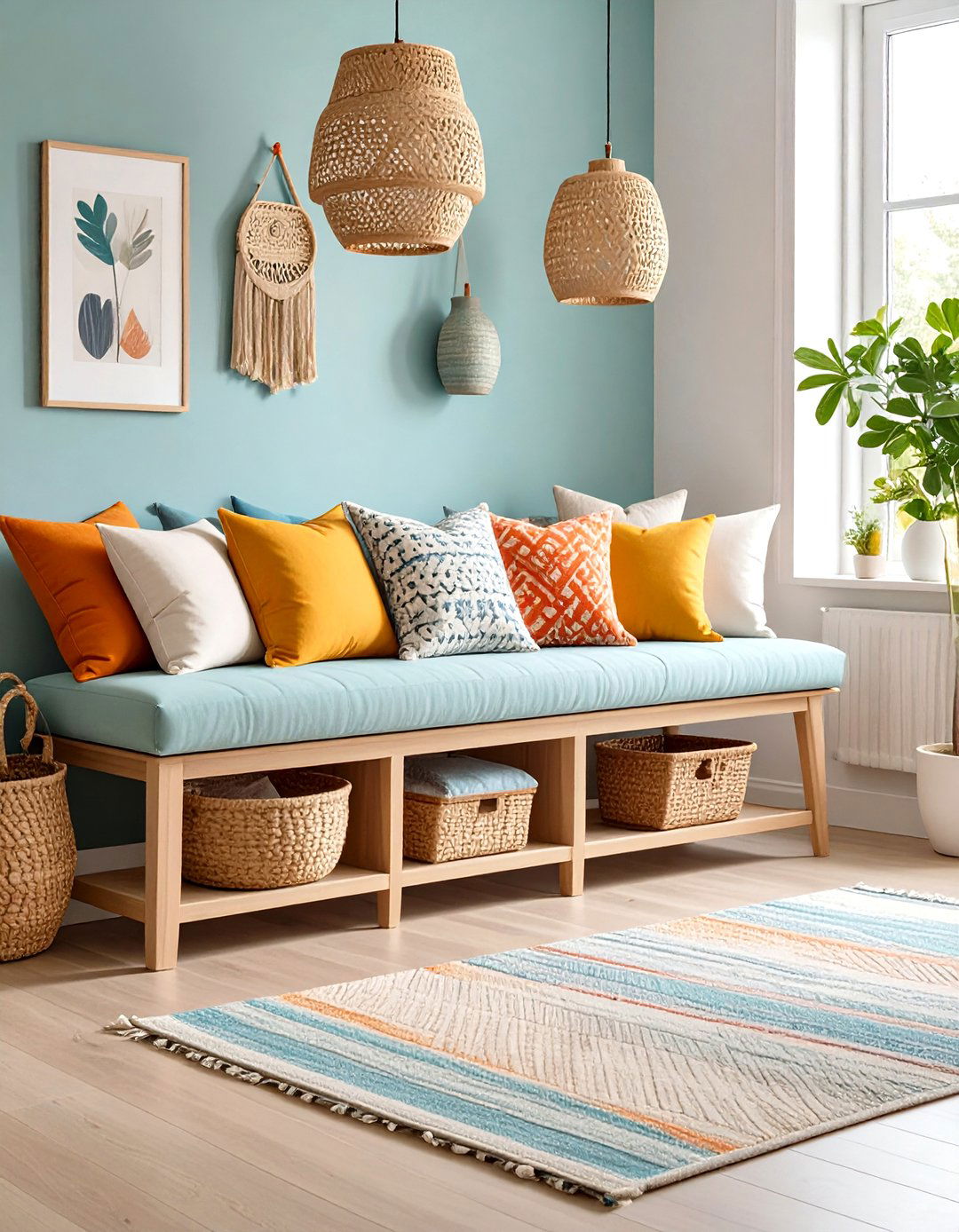
An L-shaped bench designed for breakfast nooks often hides cavernous cubbies beneath the seat. Stock them with washable baskets: one for kids’ coloring books, another for cloth napkins. If your bench backs up to a window, install soft-close hinges so lids don’t slam into glass. Modular corner benches sold online can be rearranged if you move house, making them budget-friendly compared with built-ins. Wayfair
8. Self-Storing Leaf Tables Expand Dining Room Storage
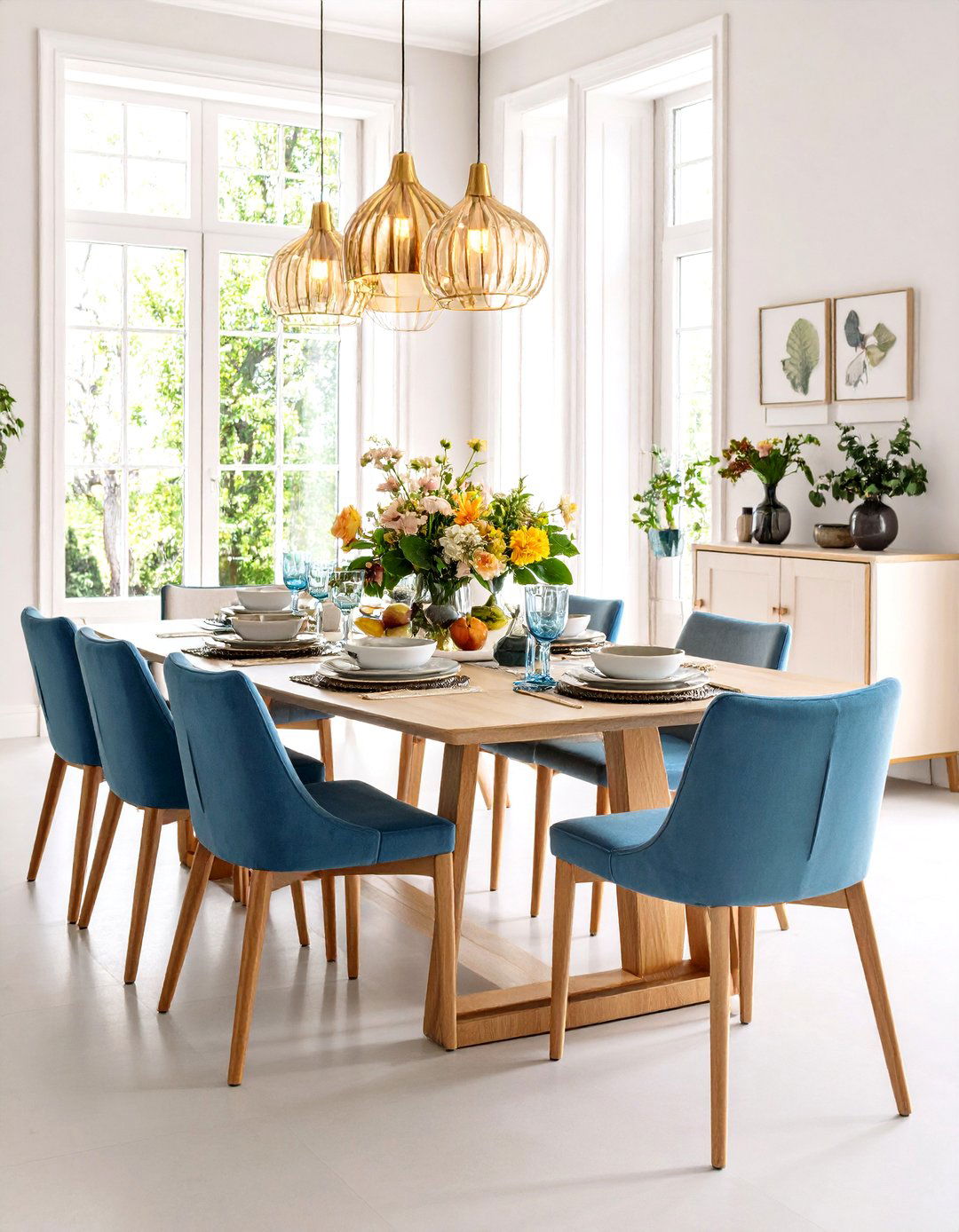
Stretch capacity without adding another piece of furniture: modern extension tables hide leaves inside the frame, so you’re never hunting in closets. Look for butterfly mechanisms that fold rather than lift out, making one-person operation possible. Bonus storage lives in the pedestal—many contemporary designs build small drawers into the base for trivets or coasters. Keep felt pads handy so the extra length doesn’t mar the floor during big gatherings. Dutch Craft Furniture
9. Upholstered Ottomans Provide Flexible Dining Room Storage
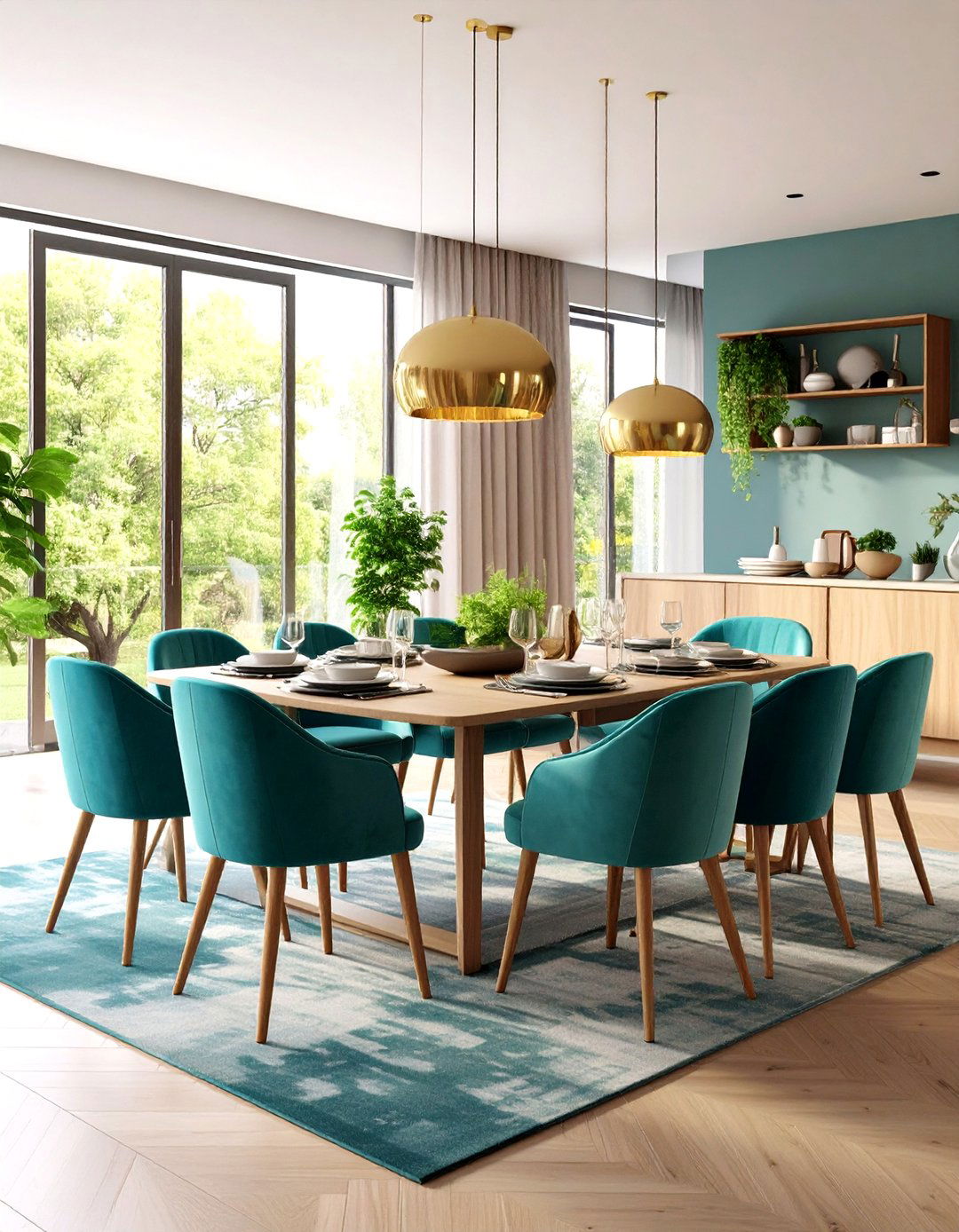
Oversize ottomans with removable tops double as kid-friendly seating and linen lockers. Choose a model on castors so it slides under a console when not needed. Interior designers favor velvet or bouclé upholstery for texture; just scotch-guard the fabric so stray wine drops blot up easily. Inside, use dividers to separate placemats from serving utensils, preventing a jumbled mess. Real Simple
10. Plate Racks Display Artful Dining Room Storage
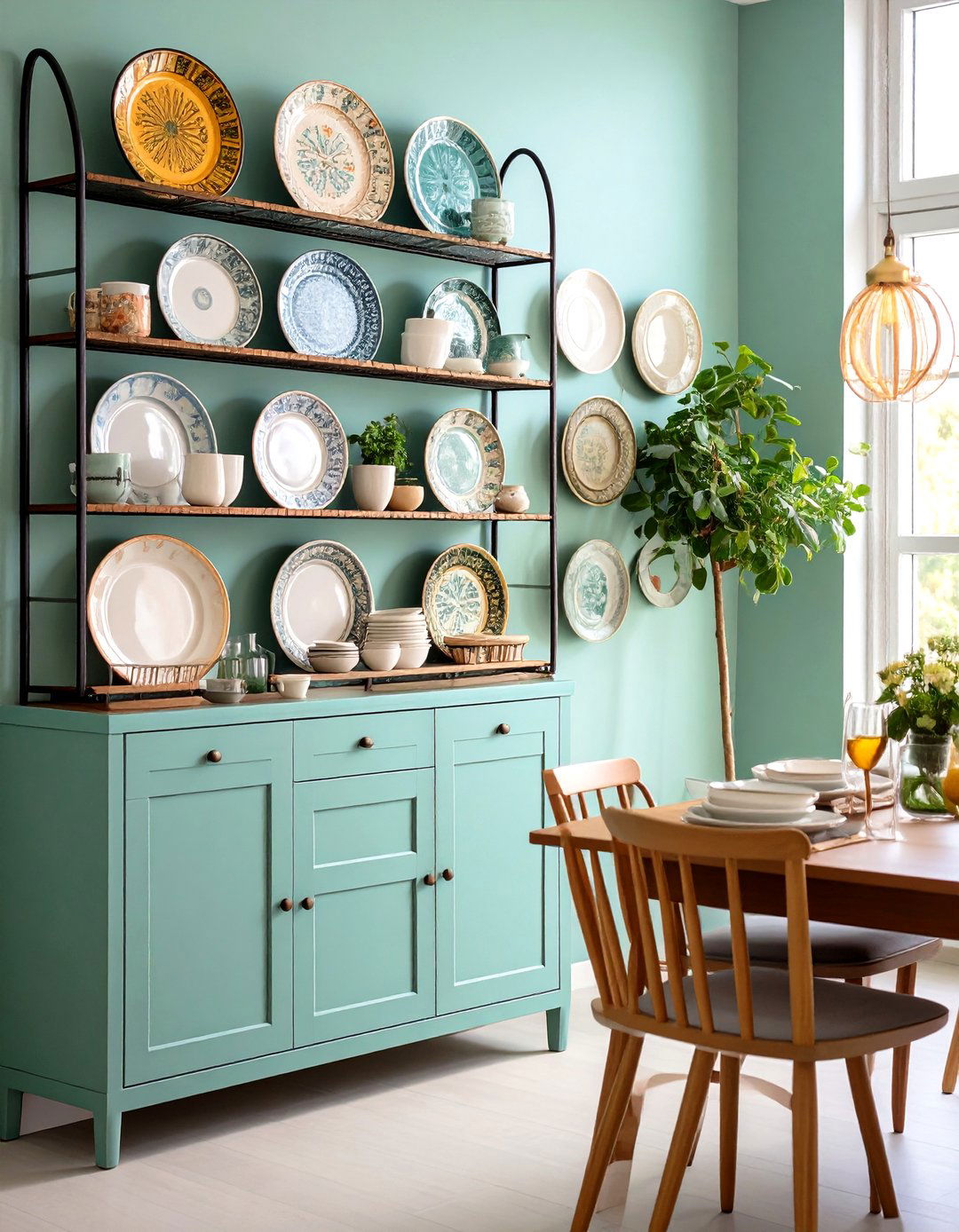
A wall-mounted plate rack turns heirloom ceramics into artwork and frees cabinet space. Install horizontal dowels or shallow grooved shelves so plates stand upright. Keep arrangements tidy by organizing by color gradient or alternating rim patterns. Add a slim rail at the bottom to prevent accidental knocks during chair movement. The look merges storage with storytelling, showcasing travel finds and family history. The Spruce
11. Wine Lattice Racks Elevate Vertical Dining Room Storage

Stackable bamboo or metal lattice racks can turn a narrow sliver of wall into a micro wine library. Each cubby suspends bottles horizontally, protecting corks and eliminating the need for a bulky floor cellar. Mount units one above another to ceiling height; stagger the configuration to create architectural interest. Leave room at the base for a shallow drawer that corrals openers, stoppers, and tasting notebooks. Amazon
12. Built-In Buffets Create Custom Dining Room Storage
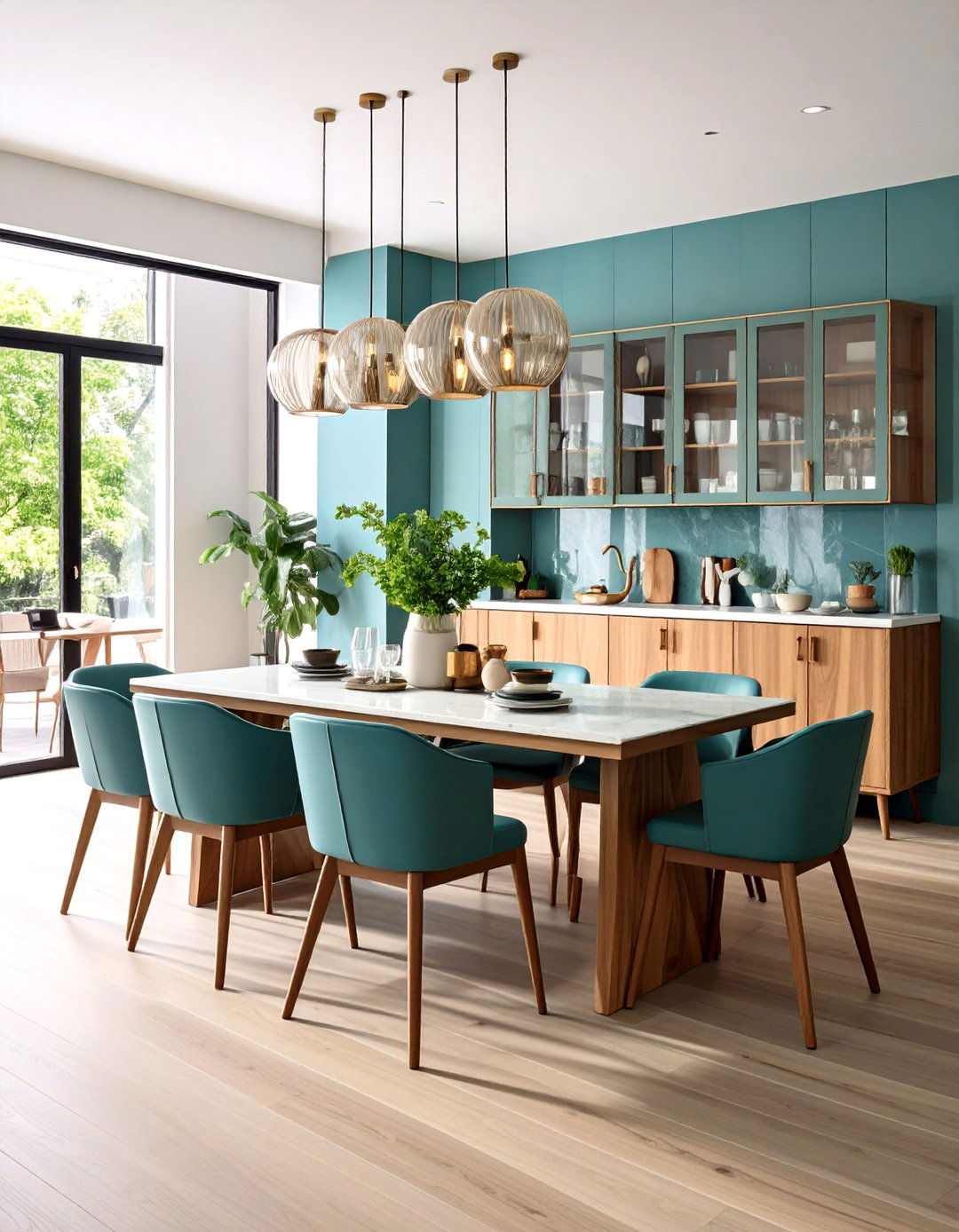
If you’re renovating, steal 12 inches of depth from an adjacent wall cavity and fit cabinets flush with the drywall. Add electrical outlets inside so small appliances—slow cookers, espresso machines—stay hidden yet ready. Upper glass cabinets boost perceived ceiling height, while a quartz countertop acts as a permanent serving station. Paint the built-in the same color as the trim for cohesion, or a contrasting moody hue to make china pop. The Spruce
13. Closet Conversions Boost Walk-In Dining Room Storage
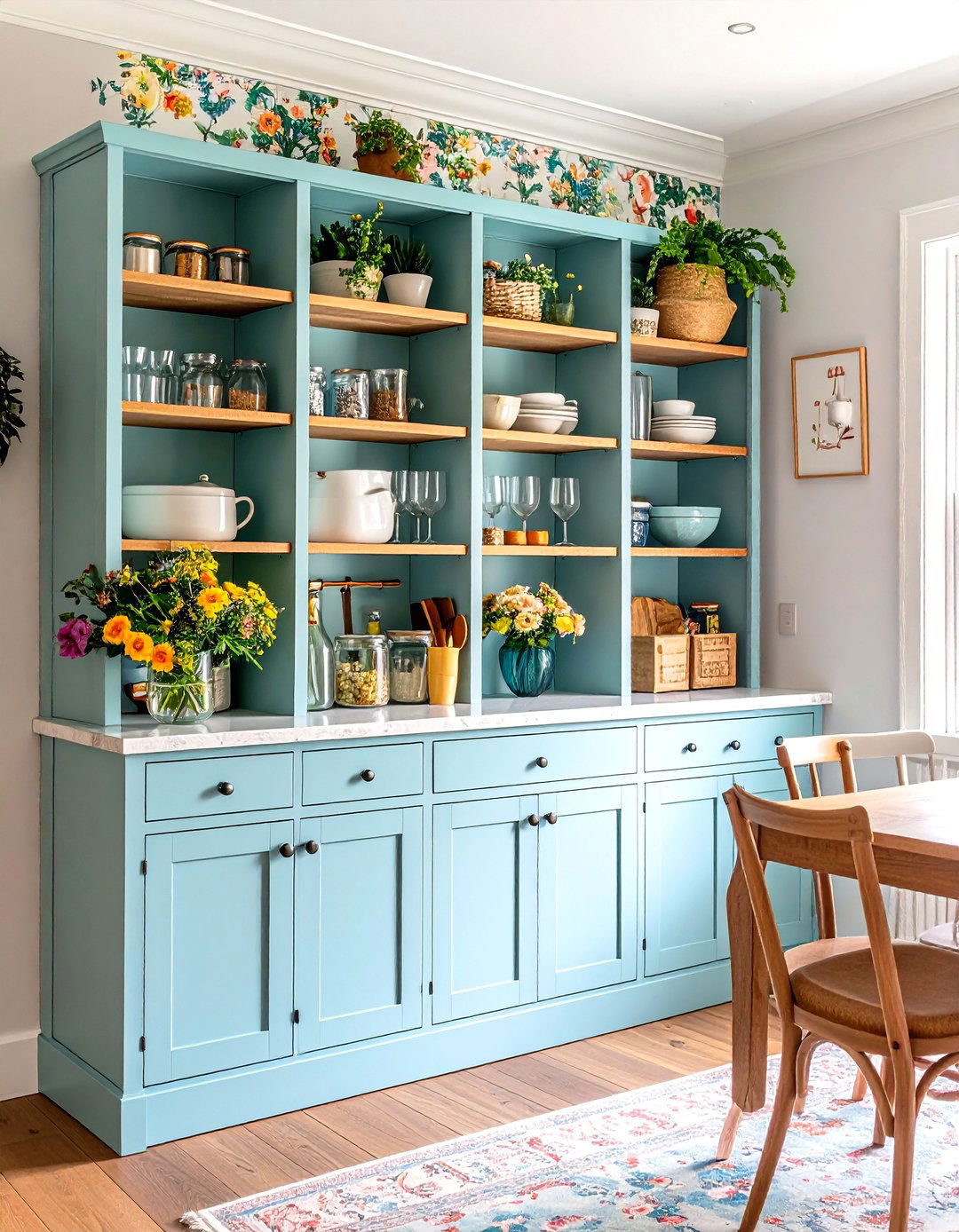
A redundant broom closet beside the dining room can morph into a mini butler’s pantry. Remove the door, install adjustable shelves from floor to lintel, and wallpaper the back for style. Use upper sections for display glassware and lower bins for everyday clutter. Swapping solid doors for reeded-glass panels keeps dust out while visually enlarging the space. Add a motion sensor light to prevent digging in the dark. The Spruce
14. Credenzas Deliver Low-Profile Dining Room Storage
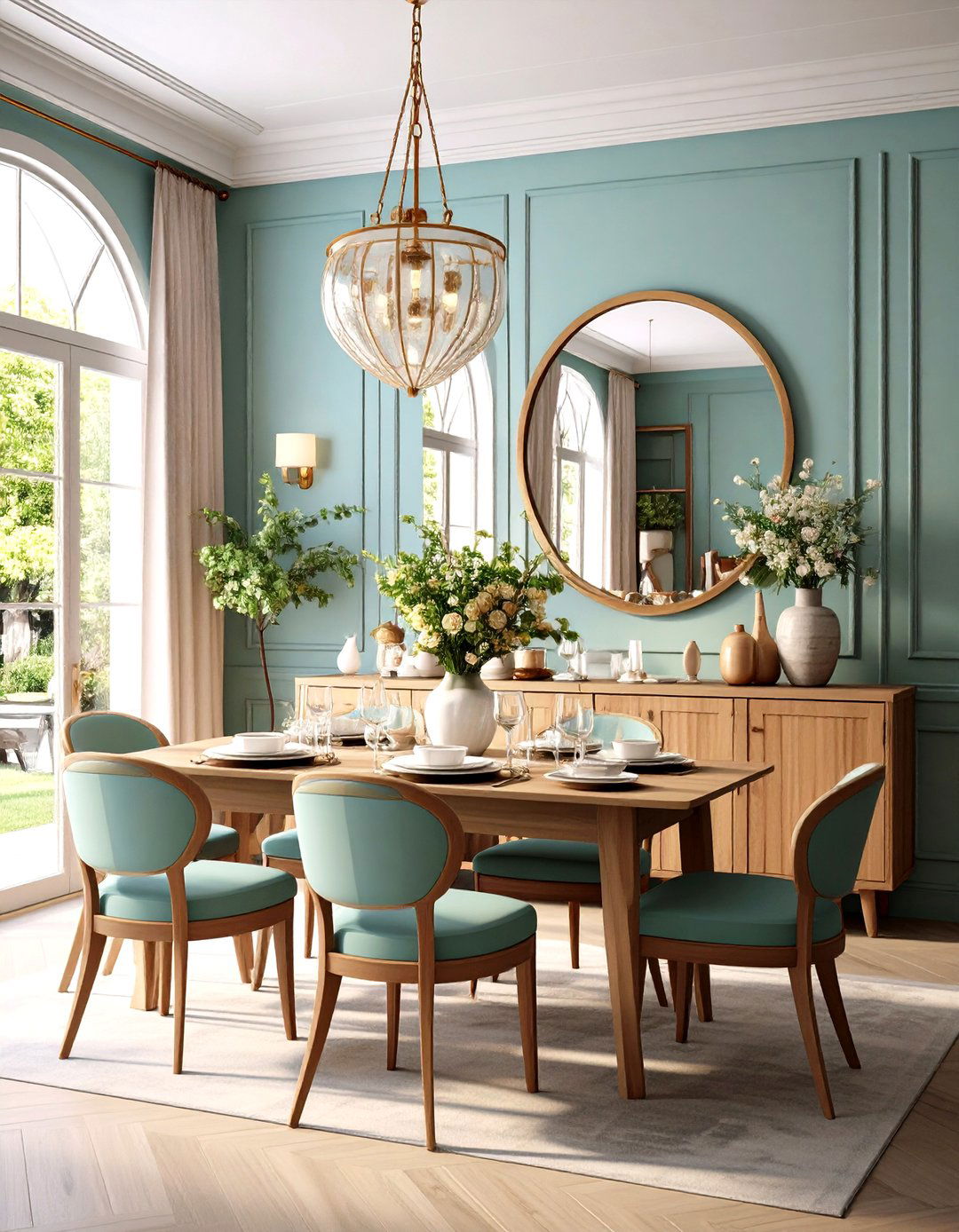
For open-plan layouts where tall cabinets might block sightlines, a long credenza offers drawer depth without height. Choose one with fluted fronts to disguise fingerprints and hidden cable cutouts so speakers or routers can live inside. Top with a large mirror to bounce light and make the room feel expansive. Adjustable internal shelves let you store anything from linens to board games, adapting as family needs shift. Castlery
15. Drawer Consoles Keep Textiles in Dining Room Storage
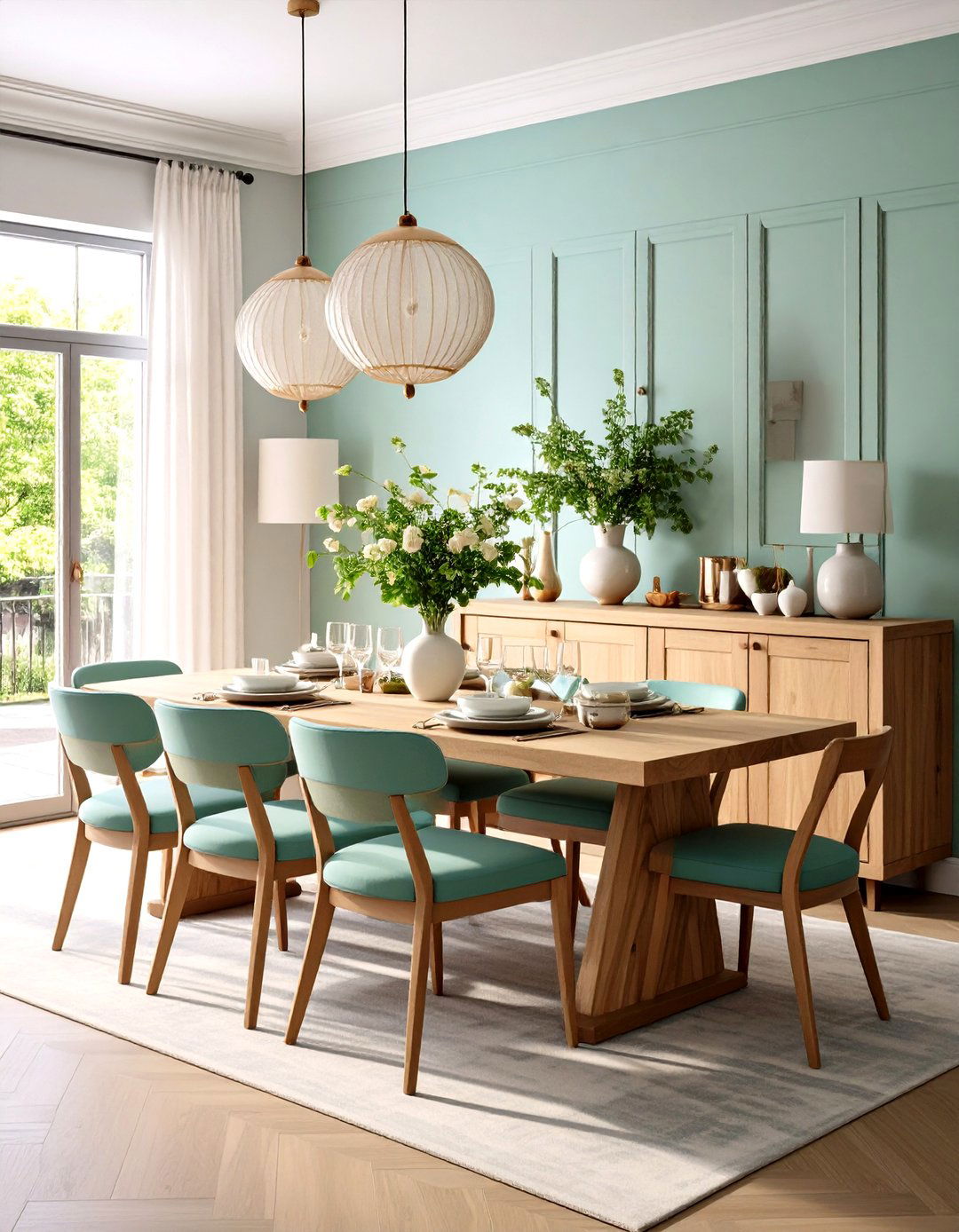
Flat, wide drawers—sometimes marketed as “server consoles”—are ideal for keeping tablecloths wrinkle-free. Roll linens onto cardboard tubes before stowing to avoid fold lines. Reserve shallow top drawers for napkin rings and place card holders, labeling compartments for stress-free party prep. Add cedar sachets against moths, and line drawers with acid-free tissue if you collect vintage damask. The Spruce
16. Vintage Dressers Bring Character to Dining Room Storage
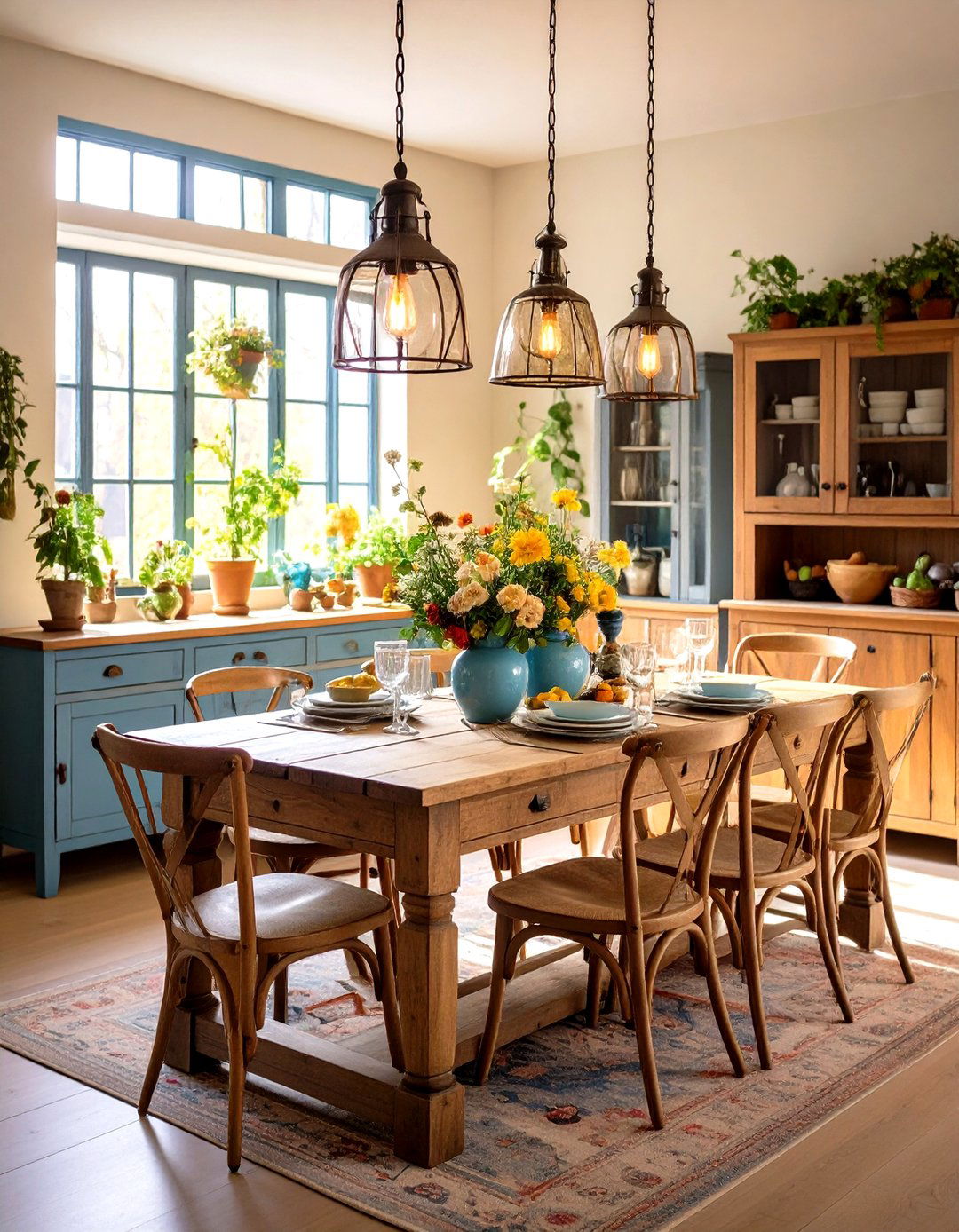
Thrifted dressers are designer favorites for injecting soul into new builds. Deep drawers swallow buffet servers, while the broad top accommodates lamps that create restaurant-level ambiance. Strip and refinish mahogany for a fresh look, or paint in high-gloss lacquer for drama. Replace hardware with unlacquered brass pulls to harmonize with modern fixtures, and add felt pads under feet to protect hardwood. Homes & Gardens
17. Modular Shelves Adapt to Future Dining Room Storage
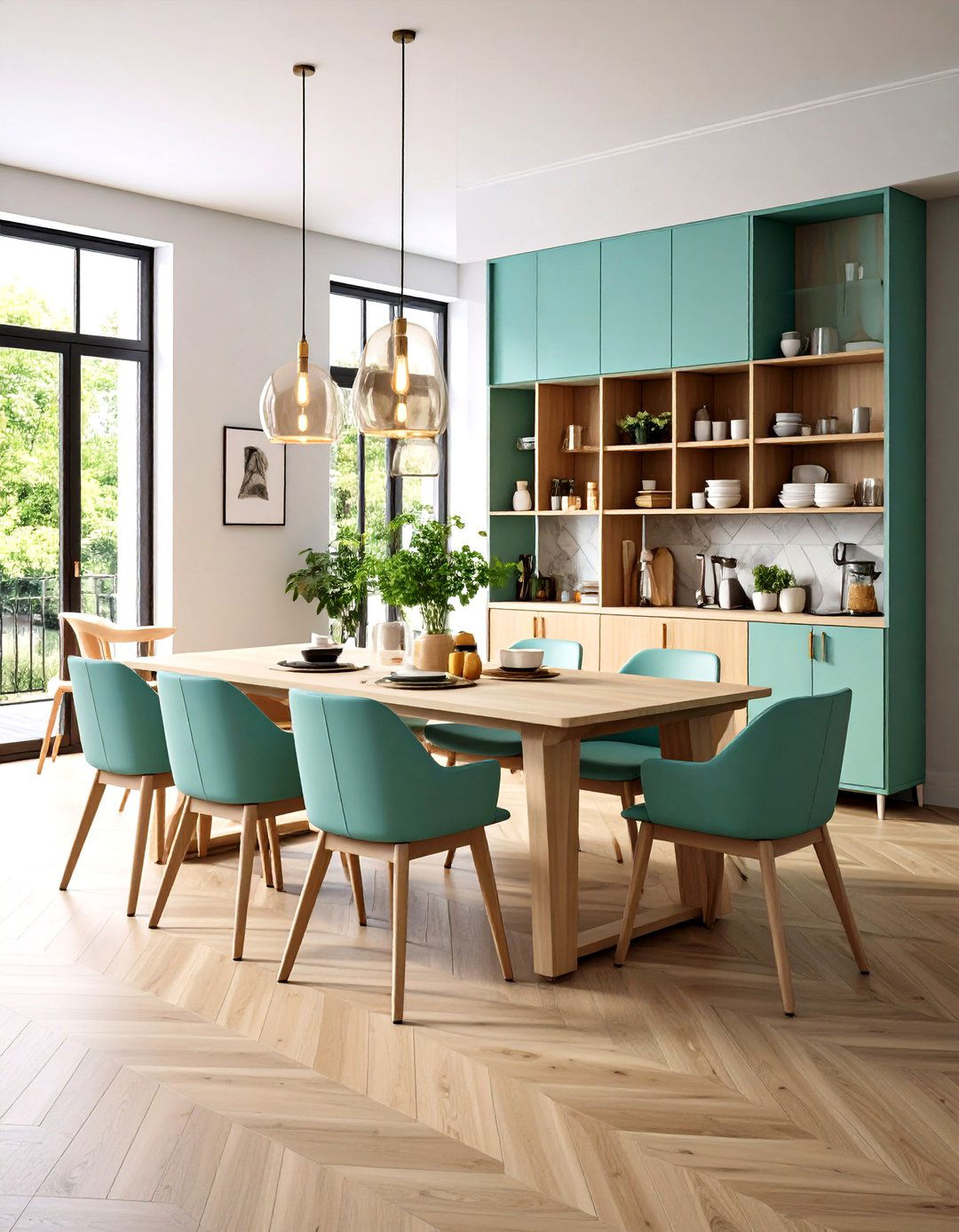
Freestanding modular systems combine closed cabinets, wine cubbies, and open cubes you can rearrange when your collection grows. Opt for units with adjustable feet to level against older floors. Start with a base cabinet and add vertical risers as needed—no renovation required. Designers recommend leaving 20 percent of each shelf empty so the arrangement looks intentional, not crammed. Real Homes
18. Lighted Display Cabinets Glam Up Dining Room Storage
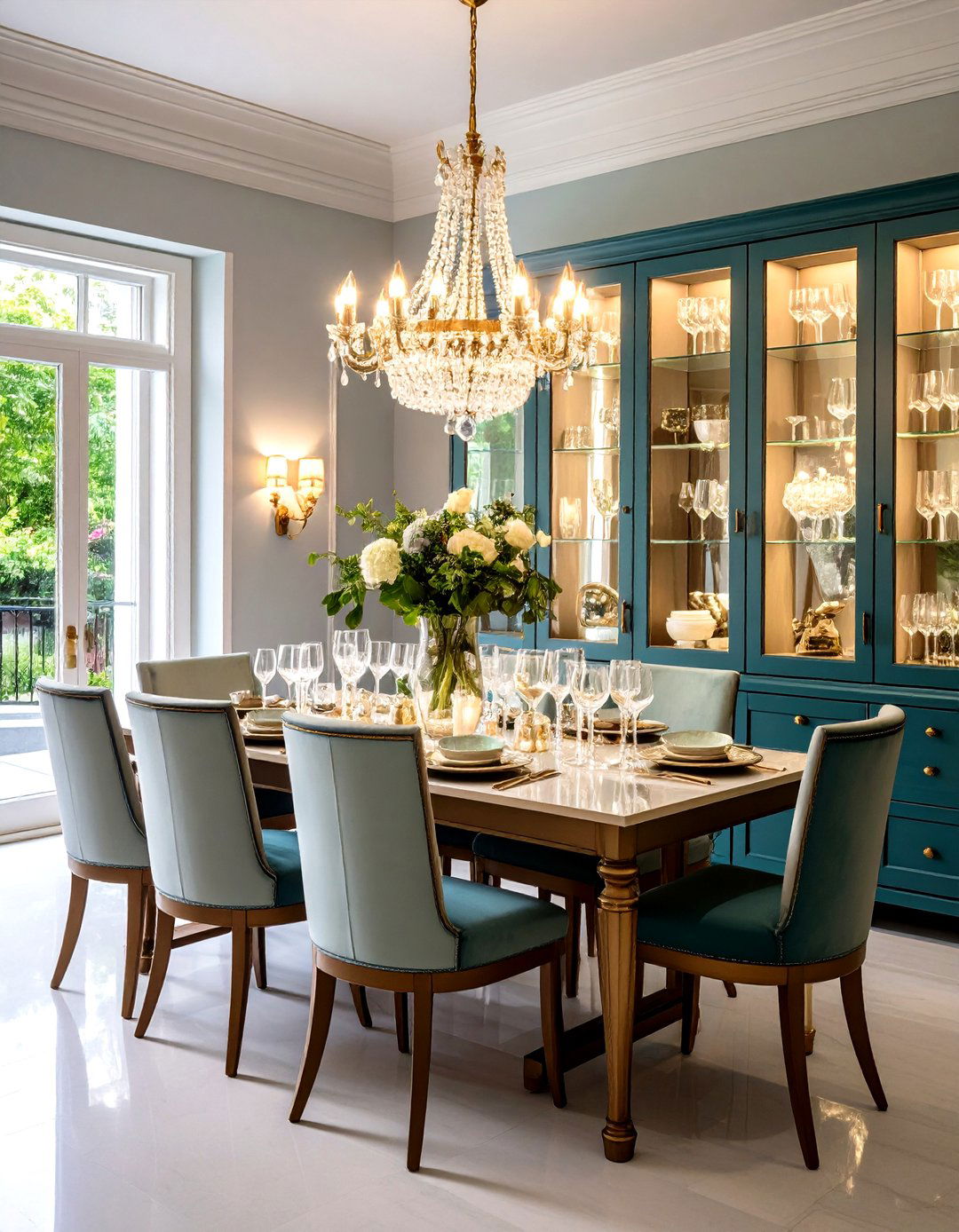
A tall, slim cabinet with glass sides and interior lighting turns crystal stems into sculpture and satisfies today’s trend for “jewel box” rooms. Choose dimmable LED strips to prevent glare, and select shelves with plate grooves so items stand safely. Drawers below provide practical hidden storage for bar tools. Mirrored backs amplify sparkle, making even a budget cabinet look bespoke. HGTV
19. Server Trolleys Blitz Setup for Dining Room Storage
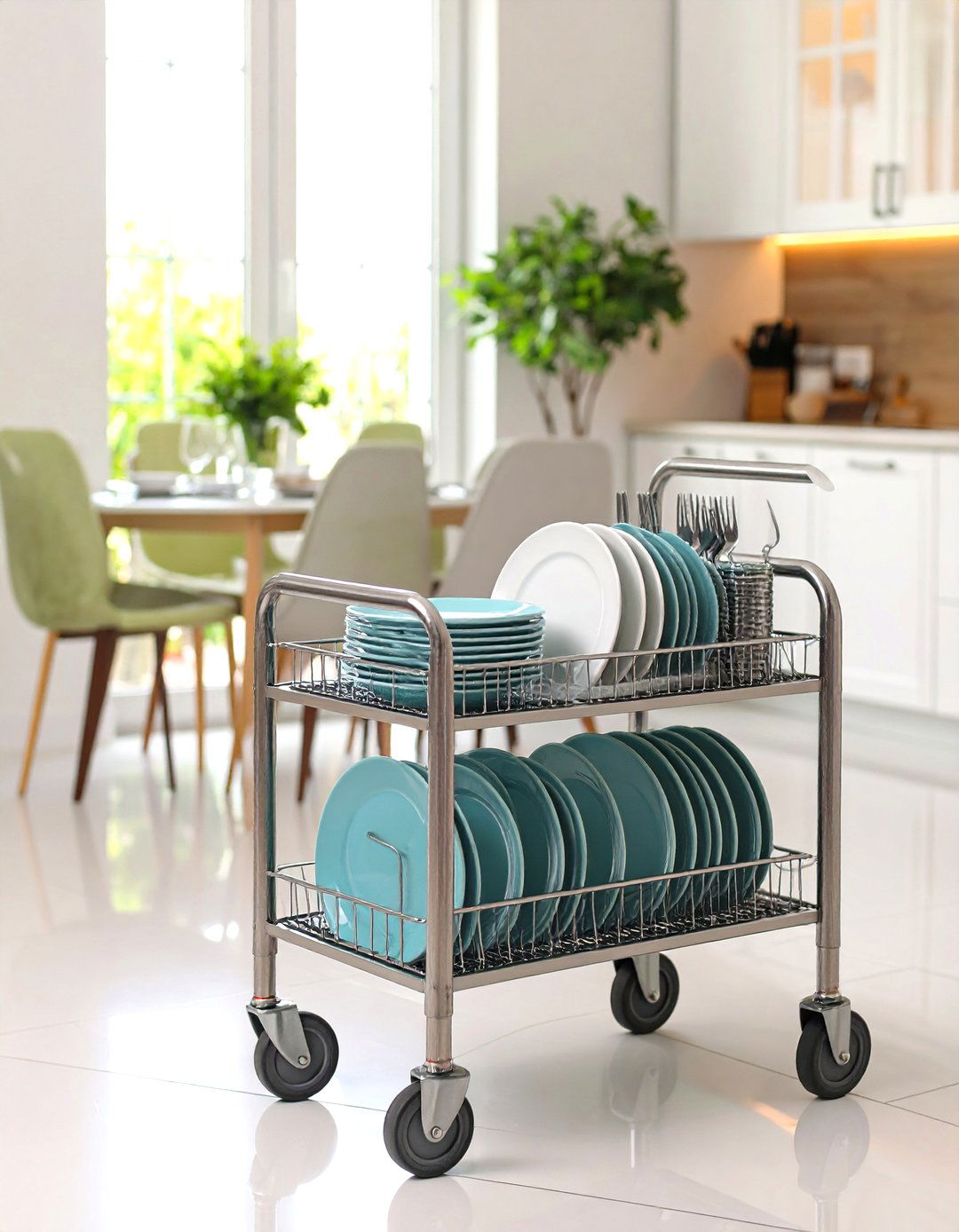
Beyond bar duty, a stainless-steel restaurant-style trolley parked near the kitchen door handles plates, flatware rolls, and hot dishes as they move to the table. During weeknights it slides against a wall as a slim console. Look for dual handles so you can hook towels or oven mitts, and choose locking wheels for safety. Wipe-clean shelves make post-party cleanup painless. Apartment Therapy
20. Peg-Rail Systems Offer Wall-Mounted Dining Room Storage
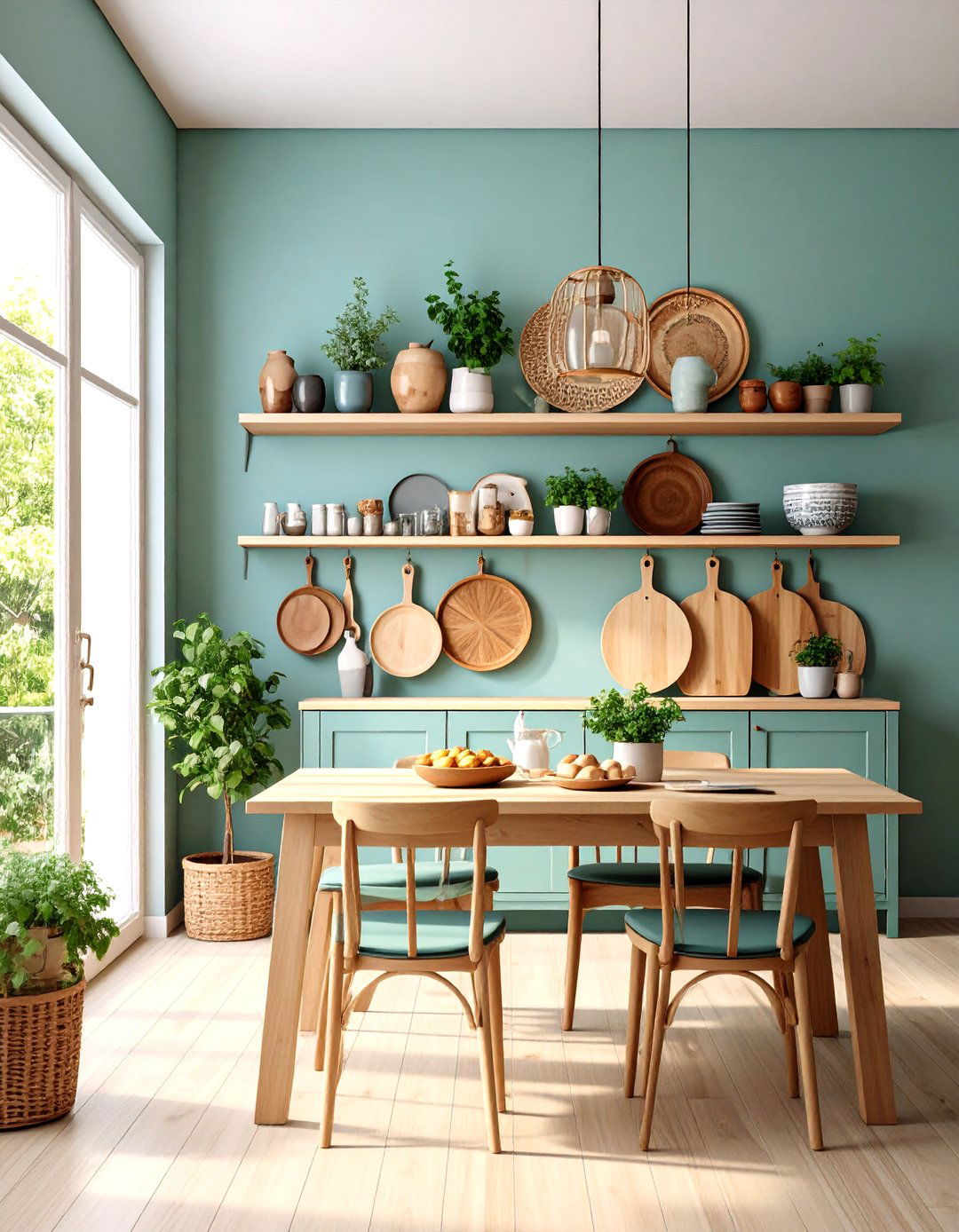
Borrow a cottage trick: install a wooden peg rail around the room at chair-rail height. Hang breadboards, woven trays, or extra folding chairs, turning practical items into rustic art. Add a narrow shelf above the pegs for mini planters or votives. Because the system is continuous, you can shift hooks whenever your storage mix changes, avoiding new holes in plaster. Real Homes
Conclusion:
Great dining-room storage balances beauty and utility. Sideboards, built-ins, clever seating, and vertical solutions each tackle a different challenge—whether it’s hiding bulky linens, displaying heirlooms, or stretching capacity for celebrations. Mixing closed and open elements keeps the room visually calm while ensuring everyday pieces stay within reach. Use these ideas singly or in tailored combinations to craft a dining space that entertains gracefully, adapts to evolving family needs, and leaves clutter off the menu.





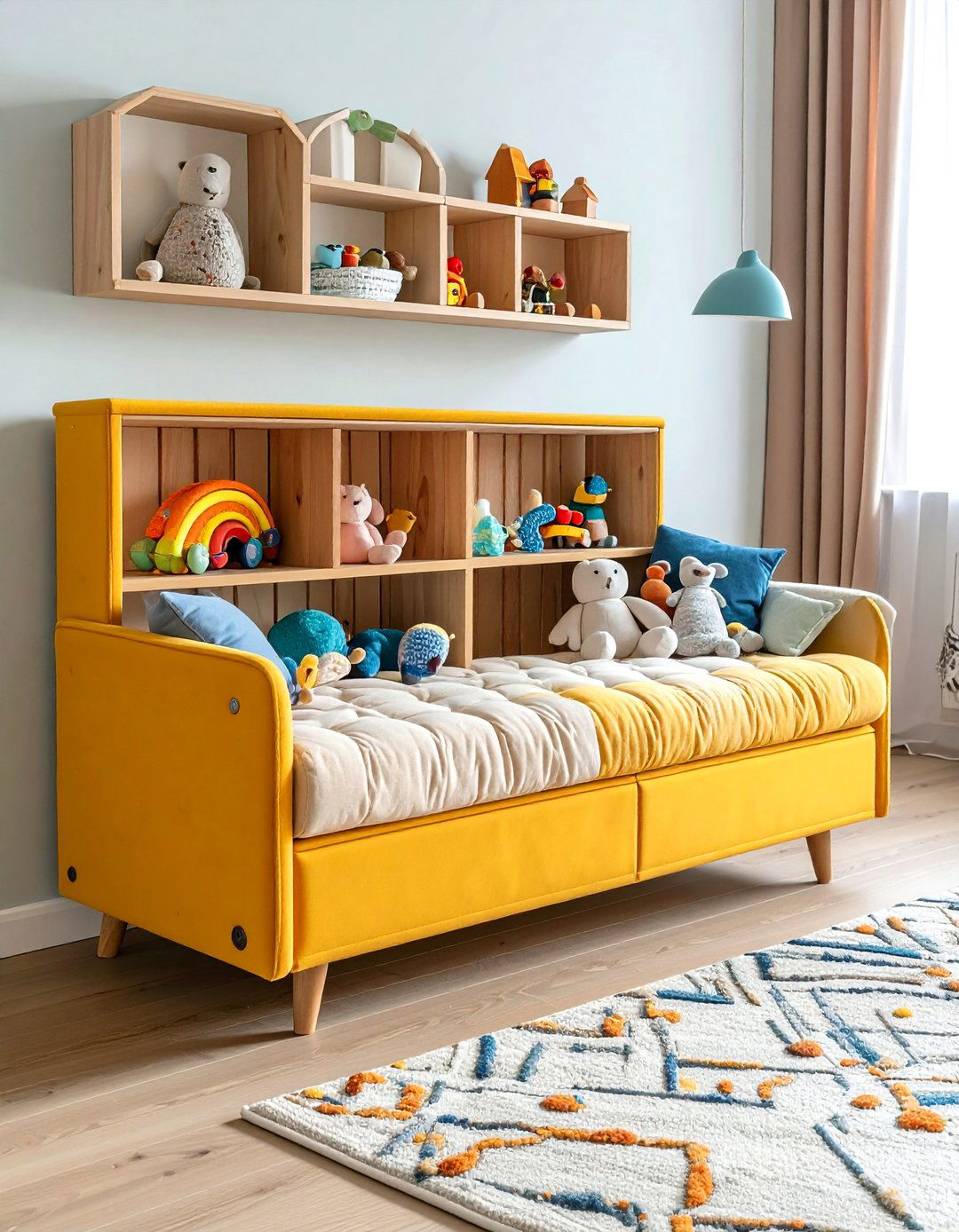
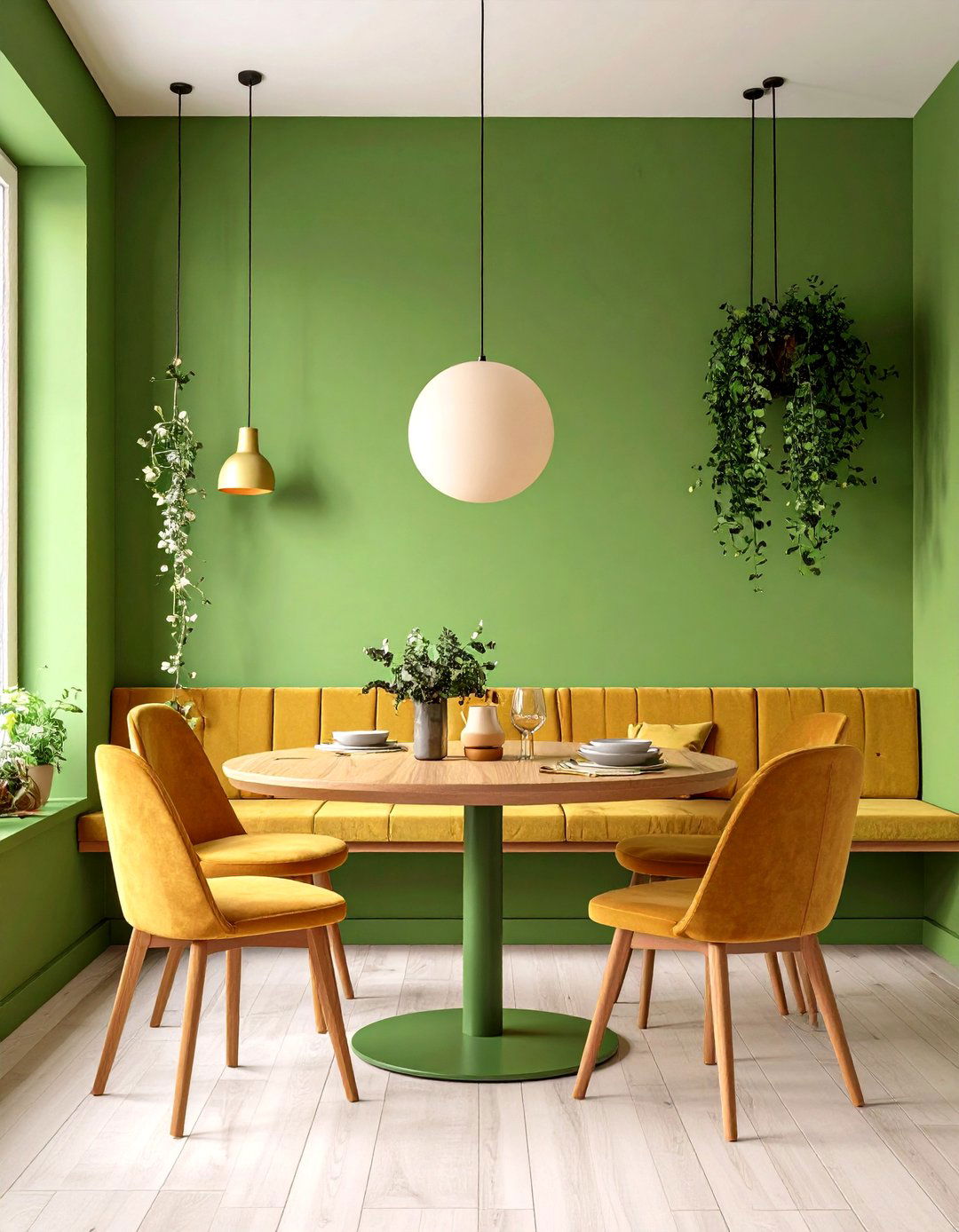
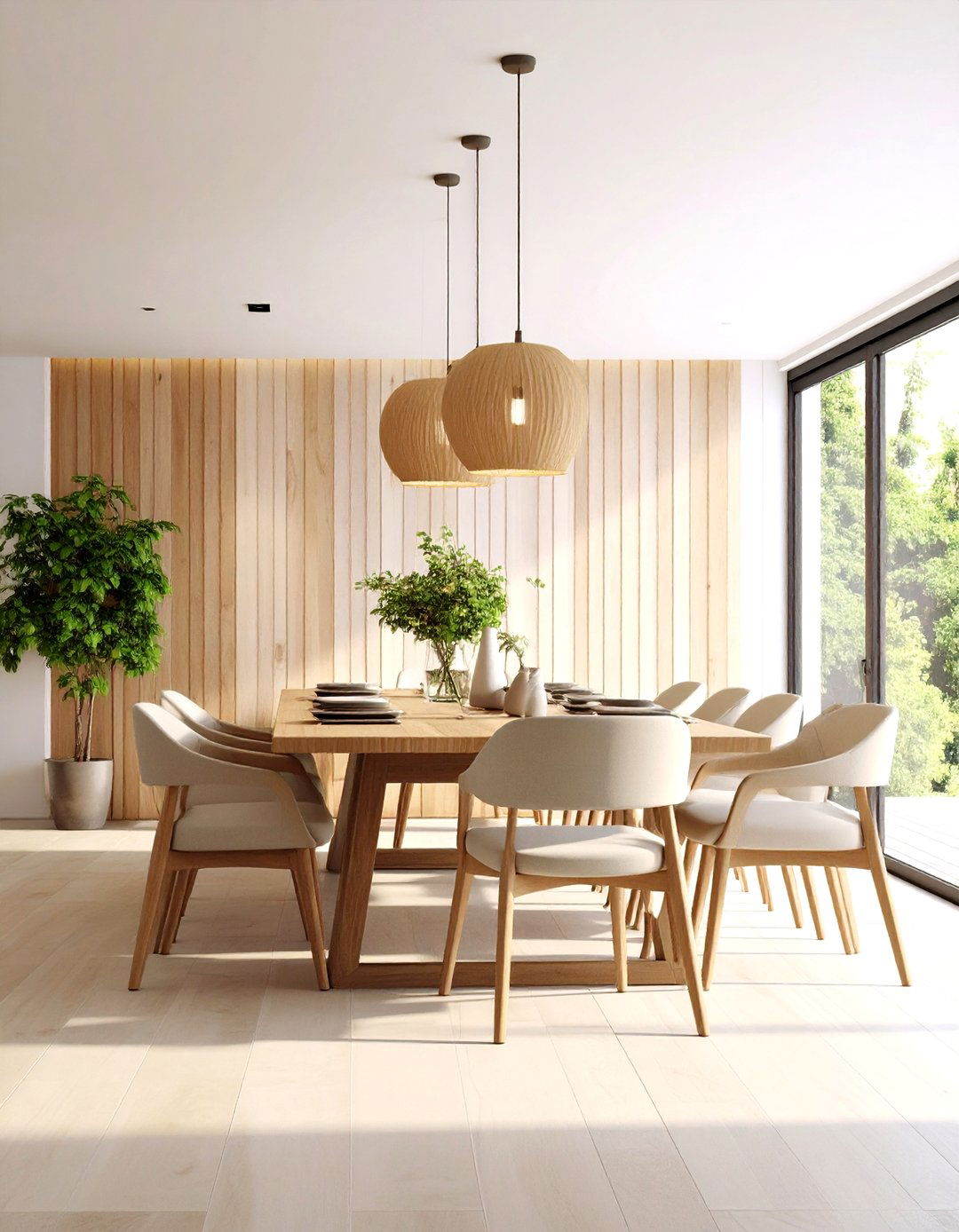
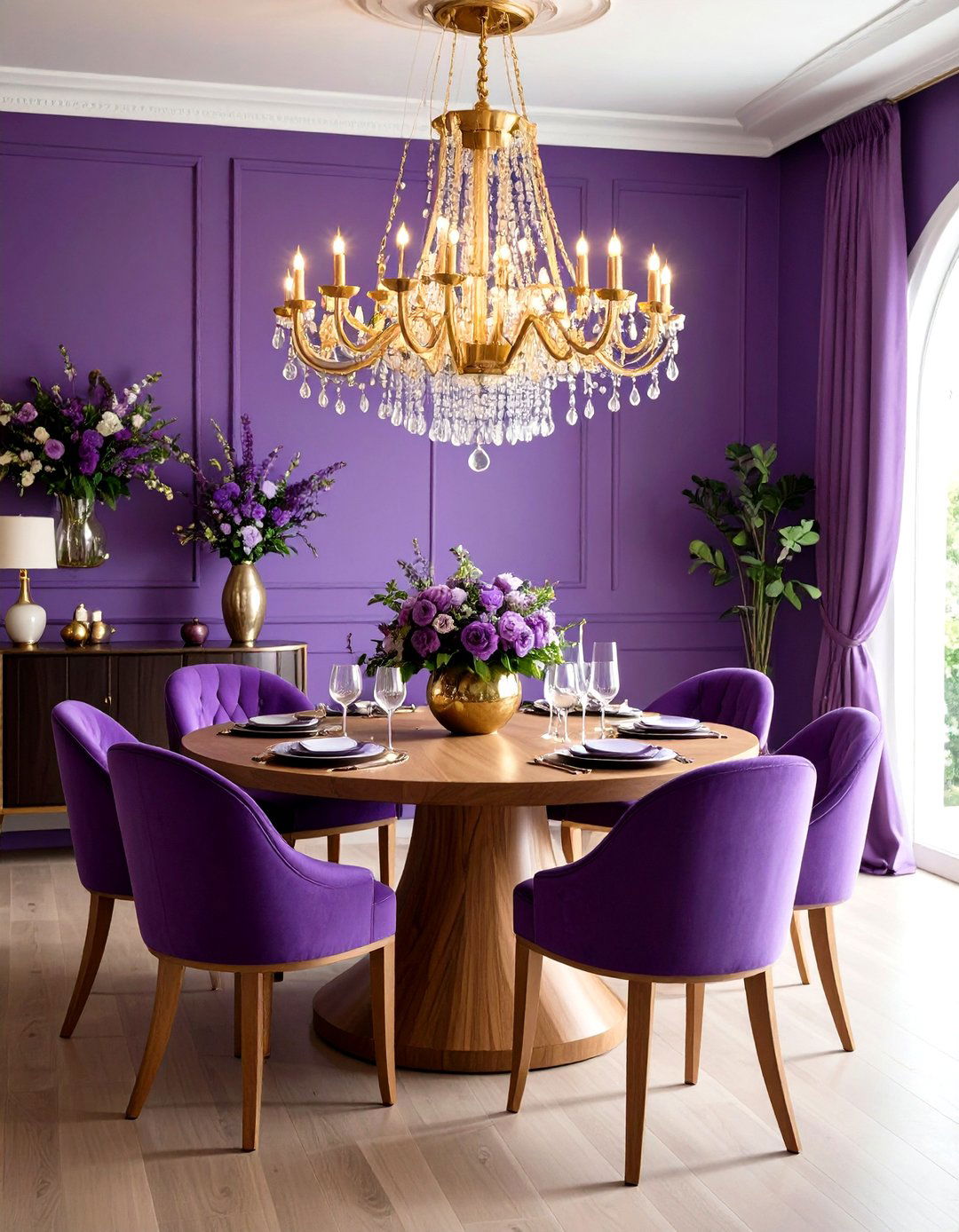

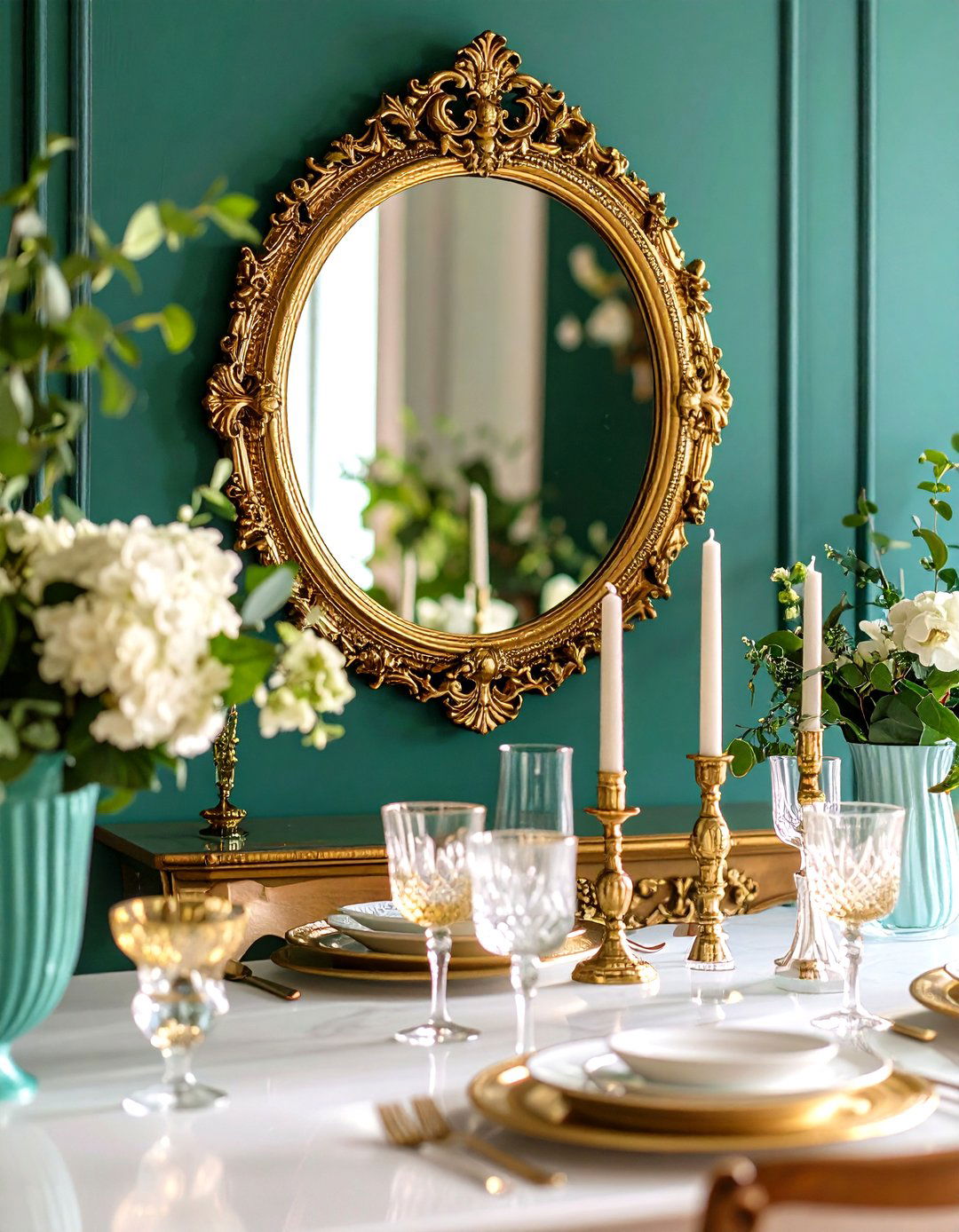
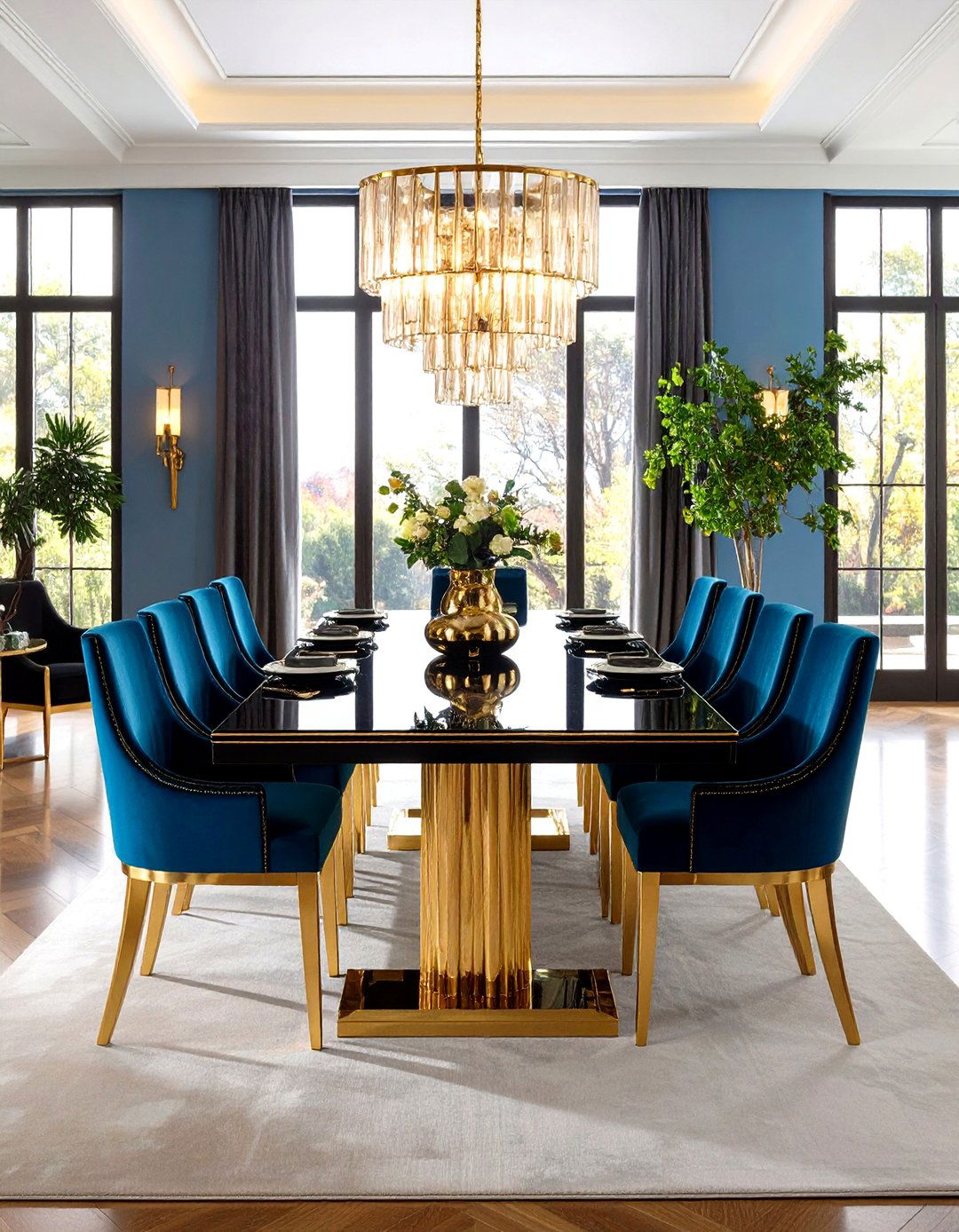
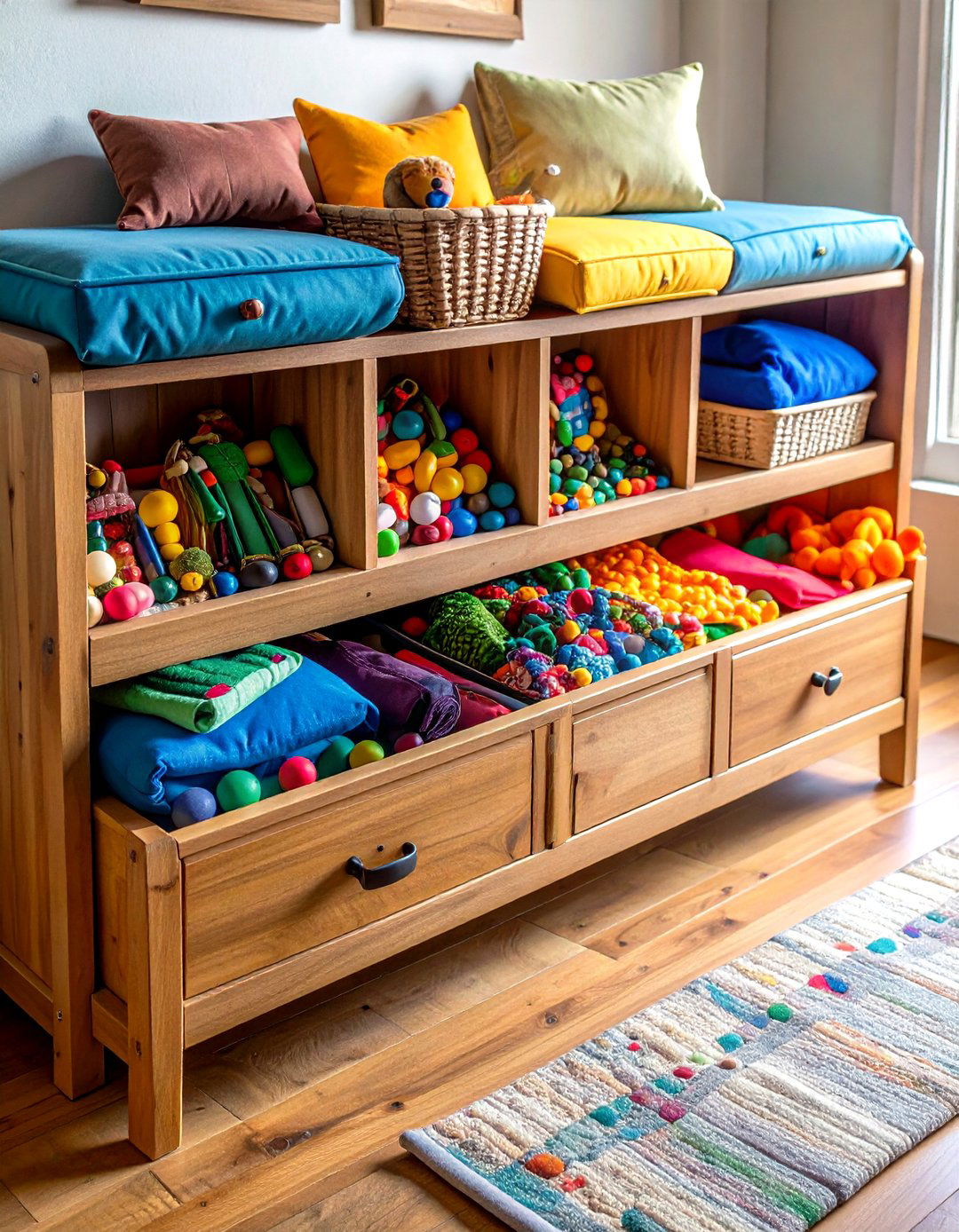


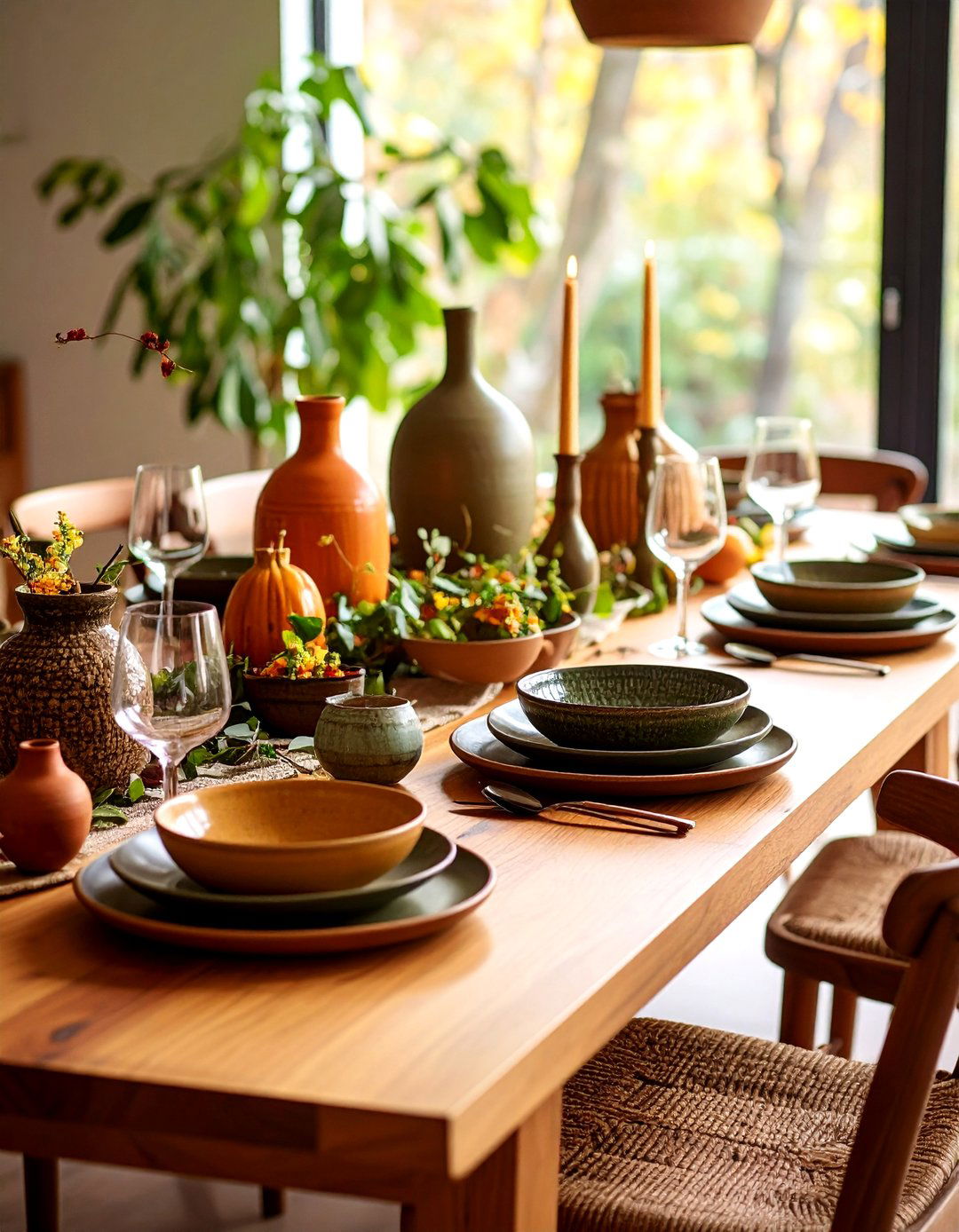
Leave a Reply